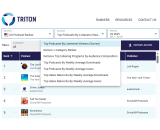#media-planning
#media-planning
[ follow ]
fromThe Drum
1 week agoBursting the marketer-think bubble: your audience isn't you (and other '26 planning truths)
Kantar's latest media data is a wake-up call for marketers: they are not their audience. As 2026 planning kicks in, it's time to burst the think bubble, spot the gaps, and seize opportunities to better connect with consumers. Consumers are not marketers. Again: consumers are not marketers. Why repeat? Because findings from annual global ad equity study suggest marketers need to be reminded not to conflate their own experiences with consumer truths.
Marketing
Marketing tech
fromThe Drum
3 weeks agoThis former Dentsu exec's 'bloody obvious' bets are shaking up Albertsons Media Collective
Brian Monahan will transform Albertsons Media Collective by applying media-planner insight, startup energy, and innovative Buy-One-Get-One-style enterprise ad-matching to scale retail media.
fromThe Drum
1 month agoHas your marketing funnel collapsed? You're not alone, say media experts at The Drum Live
"I think the biggest change is the lack of rigidity, which I think is a good thing in that sort of classic funnel marketers always like to talk about. What we're seeing, or have seen over the last few years, is that channels can play any role. And that's brilliant from a planning point of view, because it gives us creativity. It gives us flexibility to kind of do more interesting things, rather than the sort of classic broadcast-to-narrowcast targeting that we used to do."
Marketing
Social media marketing
fromSocial Media Today
2 months agoPinterest Adds New Elements to its Pinterest Academy Education Platform
Earn the Pinterest Media Planner Certification to validate media planning expertise, audience insight skills, campaign optimization and measurement ability, and to differentiate professionally.
fromExchangewire
2 months agoSmarter Audiences: Closing the Gap Between Definitions & Real Behaviour
Audience planning has long relied on segmentation. It's how we bring structure to the chaos - turning abstract brand personas into something targetable and measurable. But the way we define audiences hasn't kept pace with the way people actually behave. Today's media environment is fragmented, fast-moving, and deeply personal. People don't consume content in neat, linear ways. They're scrolling, streaming, skipping, switching. And yet, much of our audience strategy is still based on static, retrospective data: a collection of pre-built segments, often designed for another time, place, or platform.
Marketing tech
#advertising
Media industry
fromThe Drum
6 months agoMedia is in need of a massive shake-up
Traditional advertising methods are outdated and need modernization.
Human expertise is vital to understand consumer behavior in a complex market.
The evolution of content consumption necessitates an evolution in advertising strategies.
fromwww.exchangewire.com
4 months agoLightBox TV & Starcount Partner to Bring Emotional Intelligence to Total TV Planning
LightBoxTV and Starcount's partnership combines advanced audience insights with TV planning, ensuring emotionally relevant media strategies that align with consumer values.
Marketing tech
Marketing tech
fromMarketing Dive
6 months agoEdo extends data interoperability for TV outcomes measurement
Edo's new tool enhances media planning by optimizing audience engagement data across platforms.
Advertisers can leverage predictive outcomes to improve ad-driven engagement significantly.
Interoperability is crucial for marketing data in the evolving media landscape.
[ Load more ]




